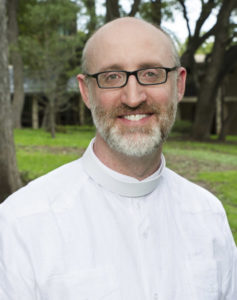We inherit from modernity a cultural frame that divides nature – the “great outdoors” – from being human. The “environment” becomes this thing outside ourselves, from which we find ourselves separated. Finding ourselves in that situation, we are surprised that our behavior somehow seems to affect the world around us. There seem to be problems in the environment, and it seems like it is our fault. Therefore, we are called to be conservationists, or even environmentalists. Perhaps we commit to be people who are concerned to uphold and preserve, perhaps even submit to and serve, this separate reality: the environment.
The world that the human authors of the scriptures, especially the Old Covenant scriptures, inhabited, was not one of human on the one hand, and environment on the other.
For example, in the ancient Near East, the “wilderness” was to be contrasted with the safety of the city – cities usually being walled. Further, within the city was the garden of the temple, and within that ordered space stood the temple itself – a point of contact between a god or goddess and his or her people. But the ancient Near Eastern “wilderness,” is not the modern “great outdoors,” or “environment.” It is land that is threatening to human safety. But it is land that may potentially fall under the leadership of God’s image on earth. And it is we, human beings, who are that image.
We are woven into the tapestry of God’s one, good creation: a single unified cosmos, called out of Chaos in the eternal Logos.
Take, for example, the sacrifice of the first-fruits. The first fruit of all created beings belong to the LORD. Insofar as we find it in our capacity, we are to do our part to offer up the first fruits that we find ourselves stewarding. So, grain, grapes, and other crops. Sheep, cattle, and other flocks and herds. But also, and of staggering important, our own firstborn sons. The LORD exacted this debt from the Egyptians as his Tenth and final Plague – the one that convinced Pharaoh to let God’s people go. For the people of God, under the Mosaic law, the LORD provided a series of sacrificial substitutions so that the child owed to God could become a living sacrifice. The child lived a life, knowing he belonged to the LORD. But he lived because of this series of substitutes: circumcision, a pair of doves or pigeons, those who took Nazarite vows, the entire tribe of the Levites, etc.
In the sacrifice of the first-fruits, the human being, the very image of God, the imago Dei, is in no way separate from the rest of living creation. The image is continuous with the rest of life and owes the same debt of gratitude back to its creator.
As Christians we encounter Jesus as the first-born, the only begotten Son offered by the Father for the life of the world. We encounter in Jesus the one who restores our image, and who is, by virtue of his resurrection, the first-fruits of those who shall rise from the grave. In his one oblation once offered, we encounter our ultimate substitute, in the one who would not accept a substitute for himself.
I wonder what a Christian theology of the imago Dei might bring to the secular, and often quasi-religious doctrines of environmentalism?
I wonder how Christians could honor the first fruits under conditions of the New Covenant?
What would happen if we no longer encountered a world where there was some kind of “environment,” separate from being human?
What would happen if we encountered a world where we understood our God-given place as priests of the creation?
This spring, we will continue to devote Sowing Holy Questions to issues of stewardship, now giving special attention to the role of humans–and the calling of Christians–as stewards or trustees of the non-human creation around us.


